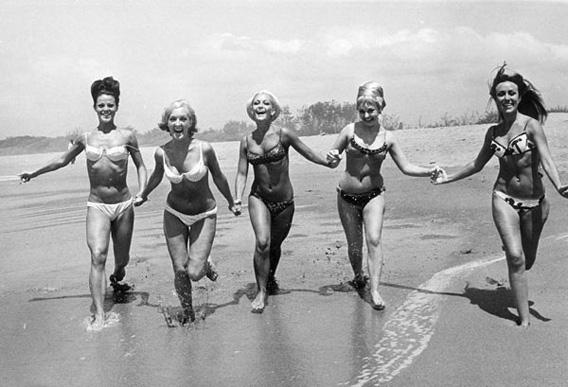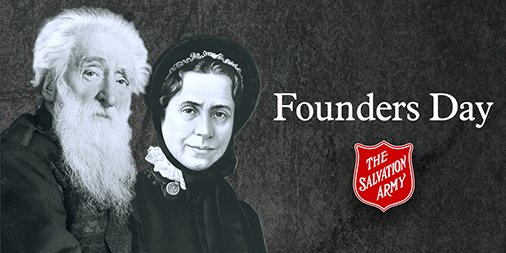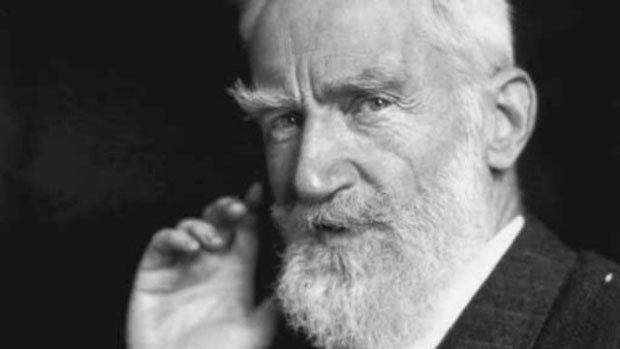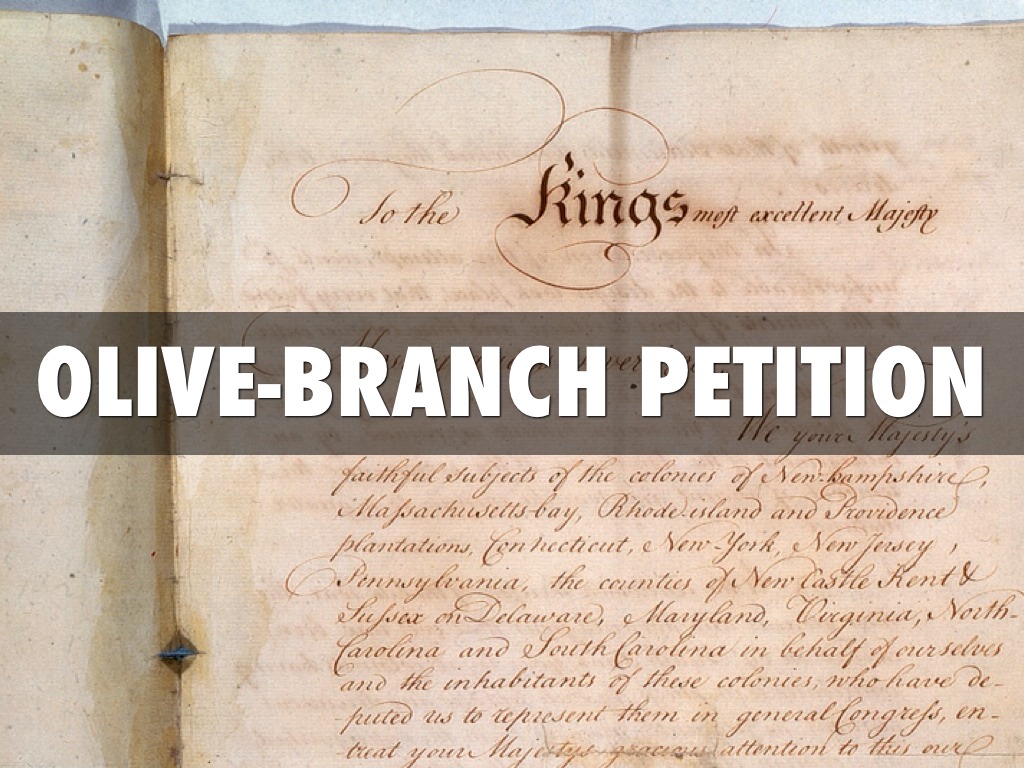
Bikini introduced
On July 5, 1946, French designer Louis Réard unveils a daring two-piece swimsuit at the Piscine Molitor, a popular swimming pool in Paris. Parisian showgirl Micheline Bernardini modeled the new fashion, which Réard dubbed “bikini,” inspired by a news-making U.S. atomic test that took place off the Bikini Atoll in the Pacific Ocean earlier that week.
European women first began wearing two-piece bathing suits that consisted of a halter top and shorts in the 1930s, but only a sliver of the midriff was revealed and the navel was vigilantly covered. In the United States, the modest two-piece made its appearance during World War II, when wartime rationing of fabric saw the removal of the skirt panel and other superfluous material. Meanwhile, in Europe, fortified coastlines and Allied invasions curtailed beach life during the war, and swimsuit development, like everything else non-military, came to a standstill.
In 1946, Western Europeans joyously greeted the first war-free summer in years, and French designers came up with fashions to match the liberated mood of the people. Two French designers, Jacques Heim and Louis Réard, developed competing prototypes of the bikini. Heim called his the “atom” and advertised it as “the world’s smallest bathing suit.” Réard's swimsuit, which was basically a bra top and two inverted triangles of cloth connected by string, was in fact significantly smaller. Made out of a scant 30 inches of fabric, Réard promoted his creation as “smaller than the world’s smallest bathing suit.” Réard called his creation the bikini, named after the Bikini Atoll.
In planning the debut of his new swimsuit, Réard had trouble finding a professional model who would deign to wear the scandalously skimpy two-piece. So he turned to Micheline Bernardini, an exotic dancer at the Casino de Paris, who had no qualms about appearing nearly nude in public. As an allusion to the headlines that he knew his swimsuit would generate, he printed newspaper type across the suit that Bernardini modeled on July 5 at the Piscine Molitor. The bikini was a hit, especially among men, and Bernardini received some 50,000 fan letters.
Before long, bold young women in bikinis were causing a sensation along the Mediterranean coast. Spain and Italy passed measures prohibiting bikinis on public beaches but later capitulated to the changing times when the swimsuit grew into a mainstay of European beaches in the 1950s. Réard's business soared, and in advertisements he kept the bikini mystique alive by declaring that a two-piece suit wasn’t a genuine bikini “unless it could be pulled through a wedding ring.”
In prudish America, the bikini was successfully resisted until the early 1960s, when a new emphasis on youthful liberation brought the swimsuit en masse to U.S. beaches. It was immortalized by the pop singer Brian Hyland, who sang “Itsy Bitsy Teenie Weenie Yellow Polka-Dot Bikini” in 1960, by the teenage “beach blanket” movies of Annette Funicello and Frankie Avalon, and by the California surfing culture celebrated by rock groups like the Beach Boys. Since then, the popularity of the bikini has only continued to grow.

KOREA
1950
First U.S. fatality in the Korean War
Near Sojong, South Korea, Private Kenneth Shadrick, a 19-year-old infantryman from Skin Fork, West Virginia, becomes the first American reported killed in the Korean War.

21ST CENTURY
2003
World Health Organization declares SARS contained worldwide
On July 5, 2003, the World Health Organization (WHO) announces that all person-to-person transmission of Severe Acute Respiratory Syndrome (SARS) has ceased. In the previous eight months, the disease had killed about 775 people in 29 countries.
:format(jpeg):mode_rgb():quality(90)/discogs-images/R-1204770-1200578235.jpeg.jpg)
ART, LITERATURE, AND FILM HISTORY
1954
Elvis Presley records “That’s All Right (Mama)”
History credits Sam Phillips, the owner and operator of Sun Records in Memphis, Tennessee, with the discovery of Elvis Presley, which is perfectly fair, though it fails to account for the roles of four others in making that discovery possible.

19TH CENTURY
1865
Salvation Army founded
In the East End of London, revivalist preacher William Booth and his wife Catherine establish the Christian Mission, later known as the Salvation Army. Determined to wage war against the evils of poverty and religious indifference with military efficiency.

INVENTIONS & SCIENCE
1996
Dolly the sheep becomes first successfully cloned mammal
On July 5, 1996, Dolly the sheep—the first mammal to have been successfully cloned from an adult cell—is born at the Roslin Institute in Scotland. Originally code-named “6LL3,” the cloned lamb was named after singer and actress Dolly Parton.

SPORTS
1975
Arthur Ashe becomes the first Black man to win Wimbledon
On July 5, 1975, Arthur Ashe defeats the heavily favored Jimmy Connors to become the first Black man ever to win Wimbledon, the most coveted championship in tennis. Arthur Ashe began playing tennis as a boy in his hometown of Richmond, Virginia.

U.S. PRESIDENTS
1865
Conspirators court-martialed for plotting to kill Lincoln, Grant and Andrew Johnson
On July 5, 1865, President Andrew Johnson signs an executive order that confirms the military conviction of a group of people who had conspired to kill the late President Abraham Lincoln, then commander in chief of the U.S. Army.

ART, LITERATURE, AND FILM HISTORY
1880
George Bernard Shaw quits his job
On July 5, 1880, George Bernard Shaw, 23, quits his job at the Edison Telephone Company in order to write. Shaw was born in Dublin, Ireland, and left school at the age of 14 to work in a land agent’s office. In 1876, he quit and moved to London.
CRIME
1921
Chicago White Sox accused of throwing World Series
After Judge Hugo Friend denies a motion to quash the indictments against the major league baseball players accused of throwing the 1919 World Series, a trial begins with jury selection. The Chicago White Sox players, including stars Shoeless Joe Jackson.

AMERICAN REVOLUTION
1775
Congress adopts Olive Branch Petition
On July 5, 1775, the Continental Congress adopts the Olive Branch Petition, written by John Dickinson, which appeals directly to King George III and expresses hope for reconciliation between the colonies and Great Britain. Dickinson, who hoped desperately to avoid a final break.

WORLD WAR I
1914
Germany gives Austria-Hungary “blank check” assurance
On July 5, 1914, in Berlin, Kaiser Wilhelm II of Germany pledges his country’s unconditional support for whatever action Austria-Hungary chooses to take in its conflict with Serbia, a long-running rivalry thrown into crisis by the assassination, the previous June 28.
TODAY IN HISTORY IN NIGERIA
1939 Veteran journalist, Kola Muslim Adio Animasaun was born, at Agbado Station, Ogun State


Comments
Post a Comment